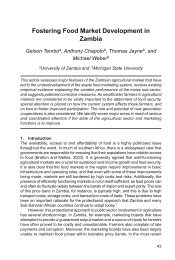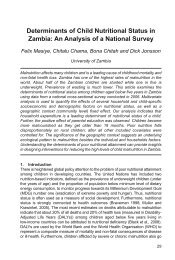Introduction to Basic Legal Citation - access-to-law home
Introduction to Basic Legal Citation - access-to-law home
Introduction to Basic Legal Citation - access-to-law home
Create successful ePaper yourself
Turn your PDF publications into a flip-book with our unique Google optimized e-Paper software.
. . . .<br />
Cal. Ct. R. 1.200,<br />
http://www.courtinfo.ca.gov/cms/rules/index.cfm?title=one&linkid=rule1_200.<br />
Rule 1.200 Format of <strong>Citation</strong>s<br />
<strong>Citation</strong>s <strong>to</strong> cases and other authorities in all documents filed in the courts must be in the style<br />
established by either the California Style Manual or The Bluebook: A Uniform System of<br />
<strong>Citation</strong>, at the option of the party filing the document. The same style must be used<br />
consistently throughout the document.<br />
Cal. Ct. R. 3.1113,<br />
http://www.courtinfo.ca.gov/cms/rules/index.cfm?title=three&linkid=rule3_1113<br />
(c) Case citation format<br />
A case citation must include the official report volume and page number and year of decision.<br />
The court must not require any other form of citation.<br />
Colorado: Court citation practice | <strong>Citation</strong> rule(s)<br />
Examples from Kowalchik v. Brohl, 2012 COA 49<br />
. . . .<br />
165<br />
Contents | Index | Help | < | ><br />
33 When interpreting a statute, we must consider rules of grammar and common usage,<br />
section 2-4-101, C.R.S. 2011, but we may ignore obvious mistakes, such as in punctuation.<br />
See, e.g., Palmer v. Diaz, 214 P.3d 546, 556 (Colo. App. 2009). From a grammatical and<br />
common usage perspective, application of the phrase "that donates a conservation easement as<br />
an entity" <strong>to</strong> the list in section 39-22-522(1) is unclear. Therefore, the section is ambiguous.<br />
See People v. Renfro, 117 P.3d 43, 49 (Colo. App. 2004) (where words chosen by legislature<br />
are unclear in their common understanding, or capable of two or more reasonable<br />
constructions leading <strong>to</strong> different results, statute is ambiguous).<br />
. . . .<br />
37 This interpretation is consistent with DOR regulations. See 1 CCR 201-1, Reg. 39-22-<br />
522(3)(h) (precluding transfer of CE credit <strong>to</strong> pass-through entity). In matters of statu<strong>to</strong>ry<br />
interpretation, "we give great deference <strong>to</strong> an agency's interpretation of the statute, looking<br />
only <strong>to</strong> whether the agency's regulation is based on a permissible construction of the statute."<br />
Smith v. Farmers Ins. Exch., 9 P.3d 335, 340 (Colo. 2000).<br />
. . . .




